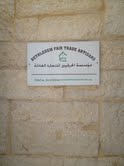On a field trip to the City of David, my roommate, Eliana, and I had the following conversation with our professor of Biblical Archaeology, Joel:
Joel: That, over there? I don’t know what that is. But I also don’t even know much about the area to make something up.
Eliana: That’s okay, we’d believe anything you would say.
Me: I agree. Literally anything.
Eliana: It doesn’t even have to be truthful.
Me: What is truth, afterall?
Eliana: Oh, are you really going to take us there?
The tone of this conversation was humorous; Joel found it amusing that we would trust his knowledge of Israeli Biblical Archeology, and Eliana poked fun at the fact that I, a bit sarcastically, took a simple conversation in a very philosophically enriched direction. “No no no” I responded to her. But in reality, I actually did want to go there.
I spend a lot of my time learning about how other people see the world. Various lenses, experiences, and accounts teach and guide ME, and so I wonder: to what extent does a historical or personal narrative uphold a sense of truthfulness. Furthermore, how does that contribute to the ways these narratives are shared? More importantly, do questions like these matter?
For obvious reasons, scholars of human science often study this concept of ‘the historical narrative.’ The debates regarding an existence of a historical narrative really rest on the question of not “what is a narrative,” but rather, “what is the meaning within and absent from the narrative.” According to scholar Hayden White’s “The Content of the Form: Narrative Discourse and Historical Representation,” linguistic anthropologists (Genette, Todorov, and Barthes) regard the narrative as “a manner of speaking characterized [by] ‘a certain number of exclusions and restrive conditions’ that the more ‘open’ form of discourse does not impose on the speaker” (2). Essentially, they suggest that ‘truthfulness’ and ‘reality’ in the narrative form could potentially be deduced by an examination of specific grammatical structures. I could suggest then, that if truthfulness in the narrative — or rather, if the existence of ONE truth — is determined by grammatical structures, cultures with different speech patterns will presumably have different senses of reality in the narrative. I further want to argue that this does not make any of the narratives less “truthful;” it instead makes “truth” more applicable.
Follow my train of thought.
I think back to a conversation we often had in a Holocaust Literature class from college. “Is there one way of interpreting the account, historically and/or personally” (the AND/OR of course being very important here). Holocaust scholars study this aspect of the narrative very deeply. In the introduction of James Edward Young’s “Writing and Rewriting the Holocaust: Narrative and the Consequences of Interpretation, Young states how “both events and their representations are ultimately beholden to the forms, language, and critical methodology through which they are grasped….instead of isolating events from their representations, this approach recognizes that literary and historical truths of the Holocaust may not be entirely separable” (1). Young further suggests how “the truths of the Holocaust…must now be seen to inhere in the ways we understand, interpret and write its history [and proposes] a search for the truth in the interpretation intrinsic to all versions of the Holocaust: both that the interpretation which the writer consciously effects and that which his narrative necessarily accomplishes for him” (2).
This last part is essential as it addresses several issues at once: not only is there a search for the TRUTH in the interpretation intrinsic to ALL VERSIONS of the Holocaust, but also the writer’s (or speaker’s) conscious interpretation is distinguished from the interpretation accomplished FOR HIM.
I am left speechless and incredibly curious. Such an argument takes the concept of truth and both generalizes and specifies it so that we are left to question if it can be maintained by history and culture in the first place.
We are in the process of questioning this in my Biblical Archaeology class. We pin biblical narrative against the archaeological one in a puzzle aiming to determine where the truth actually lies. Because different people wrote the Bible in different points of history– with different agendas and values and beliefs– the argument could be made by Archaeologists that the accounts are not entirely TRUTHFUL. And yet, a large population of people in Israel and abroad live their lives organized by the words of the Bible’s books. So much so, in fact, that ‘truth’ is the only way to explain why they do so.
It is an interesting debate, with even more of an interesting cultural account happening on the ground in Israel today. The “secular vs. religious” debate in Israel, I argue, stems from the question of truthfulness in the Israeli narrative. And, because the Israeli narrative combines both historical accounts with the biblical ones, “truth,” here too, becomes both generalized and specific. But, beautifully, it also accounts for why one could spend a Friday night Shabbat service in the heart of Israel’s religiosity, adhering to the strict law of Shabbat ritual, OR dressed in jeans on the beach of Tel Aviv with the sun setting over the Mediterranean.
I’m not sure I have an answer for what truth is; In fact, I am not sure anyone really does. What interests me more is the intersection of the various truths that exist in culture, in history, and in time. Look around… the world runs on truth!






















